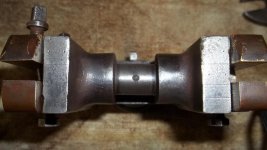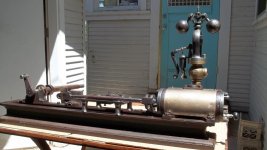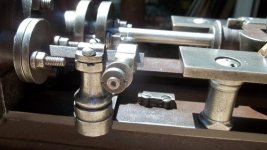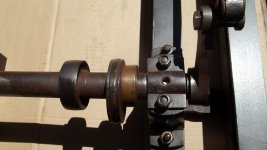Lester Bowman
Hot Rolled
- Joined
- Apr 9, 2011
- Location
- Modesto california USA
Here are some pictures of an extraordinary small very early steam engine I received from a very good friend ( Thank you Greg!) who also frequents this Forum. It is just a tad under three inch bore by six inch stroke. The bed measures a bit over 36" in length.
As you can see it has very early features like a cottered rod and cottered connection of rod to crosshead. It has turned pillars beneath the slides and that long stroke crank with the early style "D" valve.Lagging is heavy brass. The threads are not Whitworth nor do they match with any modern pitch.I know our threads are based on Sellers thread but so far I haven't made a determination.
This little guy was found by Greg in Virginia city in a junkyard full of mining equipment. I would think it is probably made in San Francisco,Sacramento or Stockton as all these cities were manufacturing steam engines in that early period. It is not impossible for it to have come around the horn but being unmarked we'll probably never know.
As you can see it has very early features like a cottered rod and cottered connection of rod to crosshead. It has turned pillars beneath the slides and that long stroke crank with the early style "D" valve.Lagging is heavy brass. The threads are not Whitworth nor do they match with any modern pitch.I know our threads are based on Sellers thread but so far I haven't made a determination.
This little guy was found by Greg in Virginia city in a junkyard full of mining equipment. I would think it is probably made in San Francisco,Sacramento or Stockton as all these cities were manufacturing steam engines in that early period. It is not impossible for it to have come around the horn but being unmarked we'll probably never know.


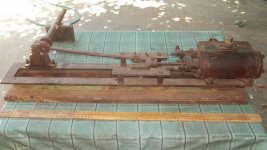

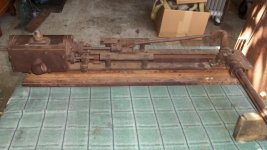






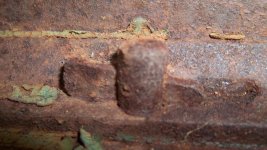


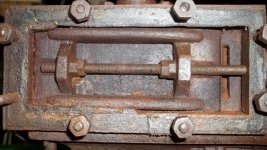



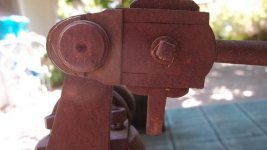

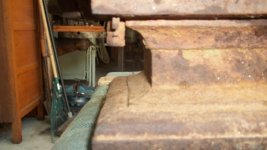

 I measured the pitch in areas where the thread wasn't "pulled". I am very fortunate most of the hardware is there and usable.
I measured the pitch in areas where the thread wasn't "pulled". I am very fortunate most of the hardware is there and usable.








